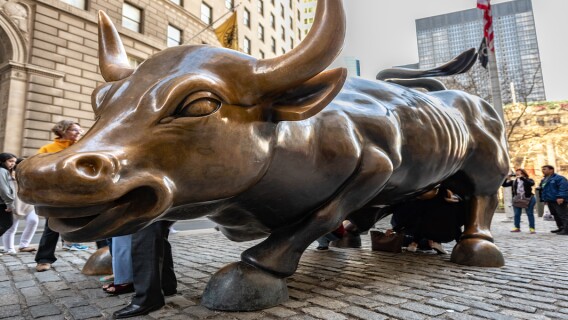The S&P 500 is up more than 33% from its April lows, and the Nasdaq is higher as well (almost 49% in that time) in an uncertain macro environment. That fact, combined with more and more calls that we’re in a new tech bubble, suggests a major market correction is imminent. Right?
Not so fast. Mike Cintolo, Chief Analyst of our flagship Cabot Growth Investor advisory, our resident market historian, and probably the best at timing the stock market of any investment expert I know, says to stay optimistic.
Mike is still long-term bullish and has been watching market signals to buy into potential leaders of the next bull phase once some of the volatility passes (although he’s currently recommending smaller positions and tighter reins due to the recent performance of growth stocks).
I’m not one to second-guess it, because just about everything Mike says about the market is right (which is why he is recognized by Market Digest as one of this industry’s top market timers every single year). But it definitely doesn’t feel like we’re in the midst of a secular bull market.
[text_ad]
But in an effort to not get too caught up in the moment myself – positively or negatively – I thought it would be a good idea to take the 30,000-foot view of the stock market and look at the historical trend. So I pulled up a 100-year stock market chart. Here’s what it looks like:
100-Year Stock Market Chart
This is a chart of the Dow Jones Industrial Average, courtesy of the website stockcharts.com. Technically, it’s a 125-year chart, dating back to 1900, and thus including the 1918 Spanish Flu global pandemic and accompanying market crash. The market bottomed in late 1920 and proceeded to embark on a nine-year bull market that saw stocks rise nearly 600% - the Roaring ‘20s indeed.
Of course, then came Black Tuesday on October 29, 1929, when the party came to a screeching halt and the Great Depression ensued. Stocks lost more than 85% of their value in less than three years and only managed to recover about half those losses once they finally bounced back in the mid-1930s.
The next true bull market didn’t start until 1949. That one lasted even longer than the Roaring ‘20s, with stocks mostly rising for 16 years before topping out in December 1965. Again, a bear market emerged and didn’t stop until the middle of 1982. The next rally – you’ll notice a pattern here – lasted longer than the one before it, going from August 1982 until the height of the Dot-com boom in November 1999, more than 17 years long.
You know what happened next. The bubble burst, stocks came crashing back to Earth for nearly three years, recovered all the losses by late 2007…then fell off a cliff again during the 2008-09 subprime mortgage crisis-fueled recession. The bottom came in March 2009. Stocks have mostly been moving up since then over the past 16 years.
If market history holds, then the current bull market will be longer than the previous one. As the 100-year stock market chart shows, there have been three major bull runs prior to this one. The first lasted nine years. The second one lasted 16 years. The third one lasted 17 years. Thus, it’s not unreasonable to think we could have another two or three years left in this rally—which would indeed put us in the mid-to-late innings of this bull market.
That doesn’t mean there won’t be some speed bumps along the way – perhaps (likely?) even next year. There have already been three big ones in the last few years alone: the fourth-quarter 2018 correction (remember that?), when stocks fell nearly 20% in three months, the Covid-19 crash, which briefly cratered the markets in early 2020, and, of course, 2022’s bear market. We also had a bit of a sell-off in April on the heels of the “Liberation Day” tariff announcement, but that didn’t reach across-the-board bear market territory and has been quickly forgotten by the markets.
Despite those three major pullbacks, they look more like small blips on the 100-year stock market chart. Market history is dotted with those blips. What matters more is the long-term trend.
And right now, that trend is firmly on an upward trajectory. History says it should last another few years.
Invest accordingly.
[author_ad]
*This post is periodically updated to reflect market conditions.


